Norris Center Undergraduate Award Winners Winter 2024
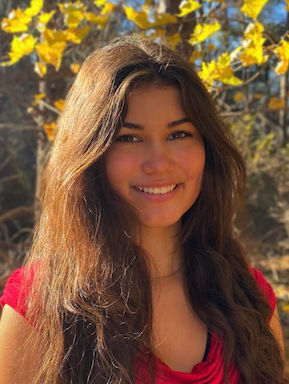
Sofia Trigueros Ufford: This award will support my research on Wildlife Education in Costa Rica. With this project, I aim to create educational materials that will provide Costa Rican elementary school students with access to current research and information on herpetology - specifically on the topic of venomous vs. harmless snakes. To prepare for Summer 2024 travel to Puerto Viejo, Sarapiquí, Costa Rica, I plan to research ongoing educational programs on wildlife in our local area, for example at the UCSC Fort Ord Natural Reserve. By creating educational materials and opportunities for students in Costa Rican public schools, my hope is that the information will in turn reach families and their broader community. In a broader sense, I am interested in doing work that helps to improve the relationship between humans and wildlife in Costa Rica, where my family is from and where I have regularly been spending time since I was a kid. Following my Summer 2024 fieldwork, I will create an ArcGIS StoryMap website which documents my research process, and a bilingual website for the public that will serve as an educational resource for students and educators.
Completed project
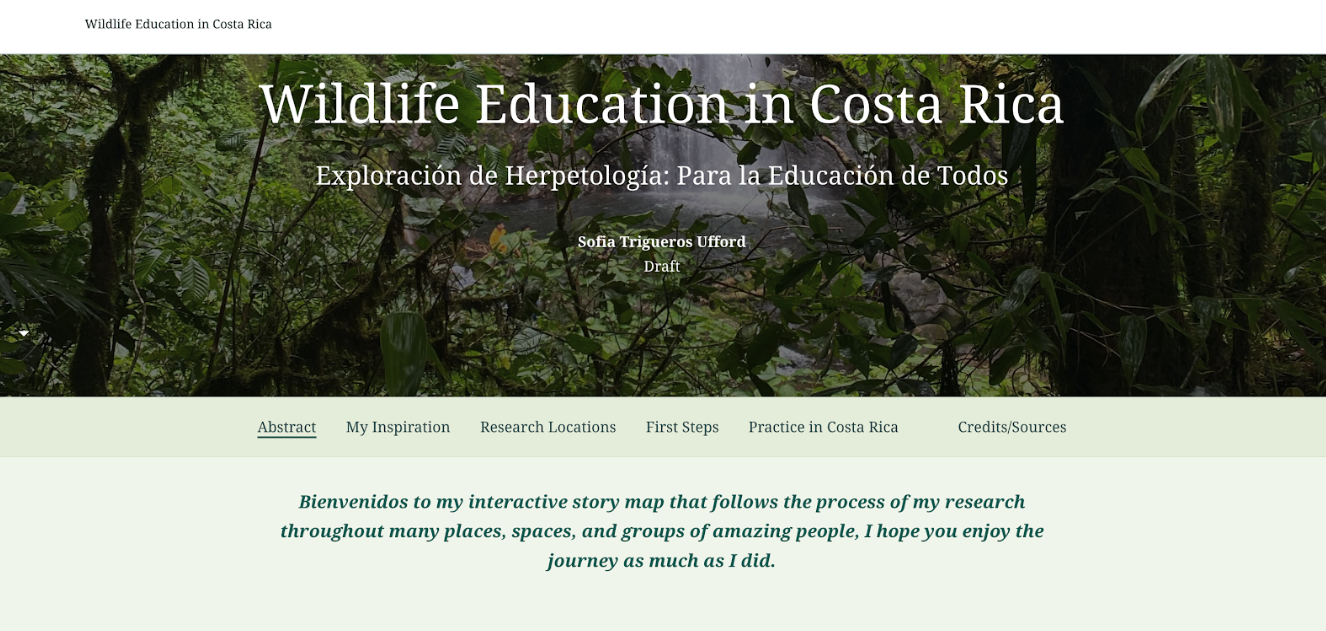
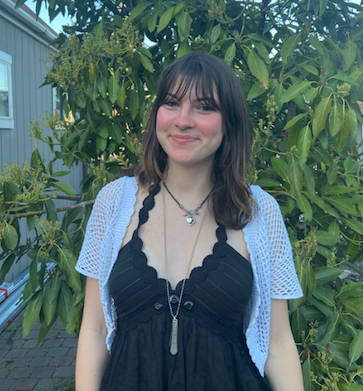
Amy Crossman: Characterized by its sandy dunes, dense shrubbery, and diverse ecology; Fort Ord Natural Reserve is a vibrant example of Monterey maritime chaparral. Within each season, the landscape undergoes a metamorphosis. Plant and animal species emerge and go dormant in response to environmental changes, a series of processes that vastly alters the visual identity of the land. It is my intention to capture the ever-changing phenology of flora and fauna at Fort Ord Natural Reserve as a representation of the resilience, diversity, and ecological niches of all its inhabitants. I will be repeatedly painting a select area of the reserve's sand dune habitats, resulting in a series of gouache pieces depicting the changing colors and textures within this chosen area. Additionally, I'll be creating a series of infographics highlighting some of Fort Ord's most vital species to be hung in the main office and printed on wearables. These infographics will employ both painted and digital elements. At the intersection of art and science, this body of work will not only captivate the viewer aesthetically but also educate and instill an appreciation for the unique ecological diversity of the reserve.
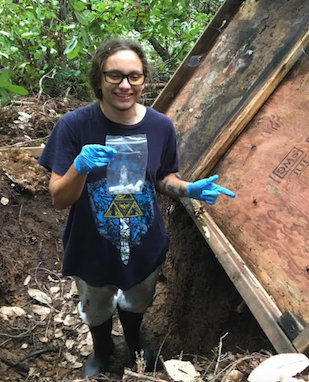
Cricket Clark: Environmental DNA extraction from webs of the cave spider Meta dolloff
Subterranean systems, which include low-light environments such as caves or tunnels, are an understudied type of ecosystem. This is due to the fact that they are very difficult to access and traverse. Because so little is known about them, it is hard to survey what organisms make their home there. Environmental DNA, or eDNA, is DNA that persists in the air, water, or on a substrate like sediment and cave walls that can tell us more about the unique environment where it was found, including what species live in that habitat. Spider webs are an excellent source of eDNA because they capture free floating DNA in the air and collect it in one place. My study will involve collecting eDNA from the webs of the endemic Meta dolloff cave spider and extracting it. I will collect web samples from multiple nearby locations, including two sites on the UC Santa Cruz campus, to get a wide range of local eDNA. I predict that webs collected from different areas will have different lists of species, allowing us to differentiate the species composition and richness at each site. The purpose of this study is to analyze the extracted eDNA to form a definitive list of known species detected from the samples, as well as give insight into the diet of M. dolloff since it is an understudied species. This will ultimately help the UCSC Natural Reserves conduct biodiversity surveys, learn more about Meta dolloff, and get a better understanding of what organisms are present in our subterranean systems like the Empire Cave. It will also contribute to a greater understanding of subterranean systems as a whole and hopefully add on to the methodology and reliability of examining spider webs for future research.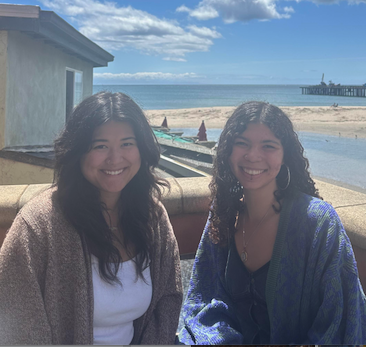 Kailena Carmon and Paige Oniki: The Oral History and Exhibit of Richard A. Cooley and the Beginnings of the Environmental Studies Department is an interdisciplinary senior exit project that focuses on documenting unheard narratives from the formative years of the department. Richard Cooley was one of the founding faculty members of the department, recruited by Dean McHenry because of his unique perspectives on interdisciplinary education and combining political issues with the environment. Cooley had an impressive career in Alaska where his work as the chief negotiator between the Federal government and Alaska inspired him to start the Alaska Field Program at UCSC. This program led many passionate students to undertake impactful projects, thesis, and eventually life- long careers in Alaska, leaving an impressive and longstanding UCSC alumni presence. We have been conducting oral histories of these alumni and other colleagues of Cooley to piece together a narrative that both captures the legacy of Cooley and his students, whilst also inspiring a future generation of students to conduct their own field research. This exhibit is to be installed on the fourth floor of the Interdisciplinary Science Building across from one of the main Environmental Studies classrooms so students and faculty can learn about department history and the legacy it continues to create. By recording this history and making it visible, our hope is to inspire a resurgence of the Alaska Field Program at UCSC to create more opportunities for learning, exploration, and careers for students.
Kailena Carmon and Paige Oniki: The Oral History and Exhibit of Richard A. Cooley and the Beginnings of the Environmental Studies Department is an interdisciplinary senior exit project that focuses on documenting unheard narratives from the formative years of the department. Richard Cooley was one of the founding faculty members of the department, recruited by Dean McHenry because of his unique perspectives on interdisciplinary education and combining political issues with the environment. Cooley had an impressive career in Alaska where his work as the chief negotiator between the Federal government and Alaska inspired him to start the Alaska Field Program at UCSC. This program led many passionate students to undertake impactful projects, thesis, and eventually life- long careers in Alaska, leaving an impressive and longstanding UCSC alumni presence. We have been conducting oral histories of these alumni and other colleagues of Cooley to piece together a narrative that both captures the legacy of Cooley and his students, whilst also inspiring a future generation of students to conduct their own field research. This exhibit is to be installed on the fourth floor of the Interdisciplinary Science Building across from one of the main Environmental Studies classrooms so students and faculty can learn about department history and the legacy it continues to create. By recording this history and making it visible, our hope is to inspire a resurgence of the Alaska Field Program at UCSC to create more opportunities for learning, exploration, and careers for students.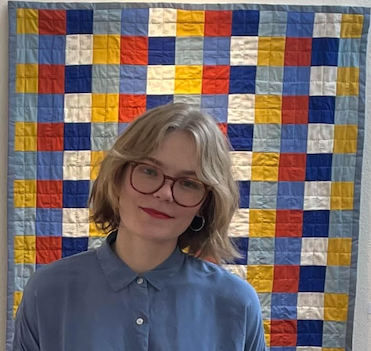
Lily Nash: This Natural History and climate grief-focused quilting bee is a community practice arts project, to bring students and community members across disciplines on campus together through quilting. As we cope with the global losses brought about by climate change, it is essential that we feel held in community. Not only are students able to bring their unique stories and understanding to our conversations, but this process provides an outlet for these students to express their grief in a safe space. As these budding researchers develop in their careers, they will experience some of the worst impacts of the climate crisis. If they don’t learn to grieve, in conjunction with their studies, they will likely be paralyzed, like generations before them, at a time when we can’t afford inaction. This project intends to create space for our grieving while simultaneously providing community support as we envision our evolution and the future of our natural environments together.
Completed project photos
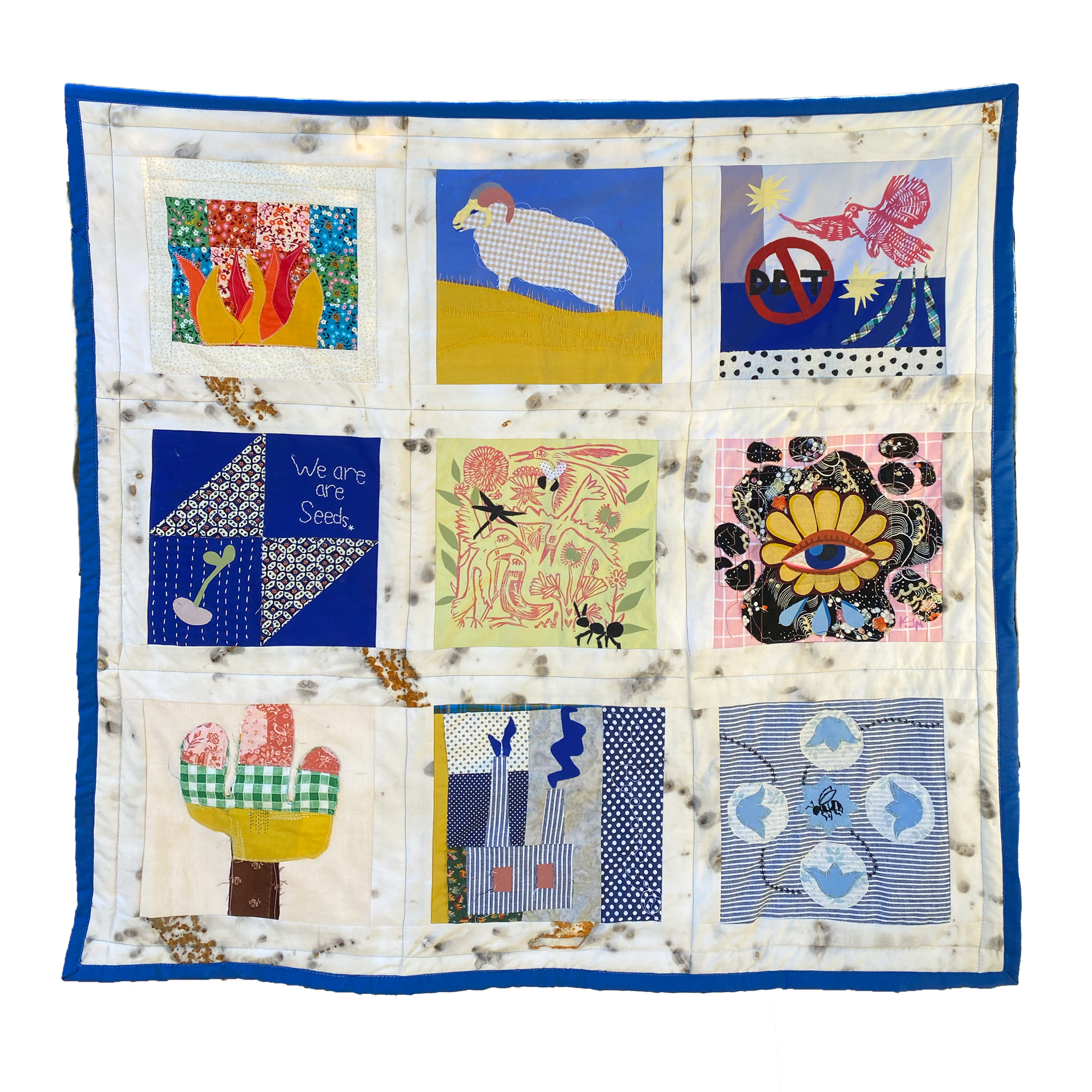
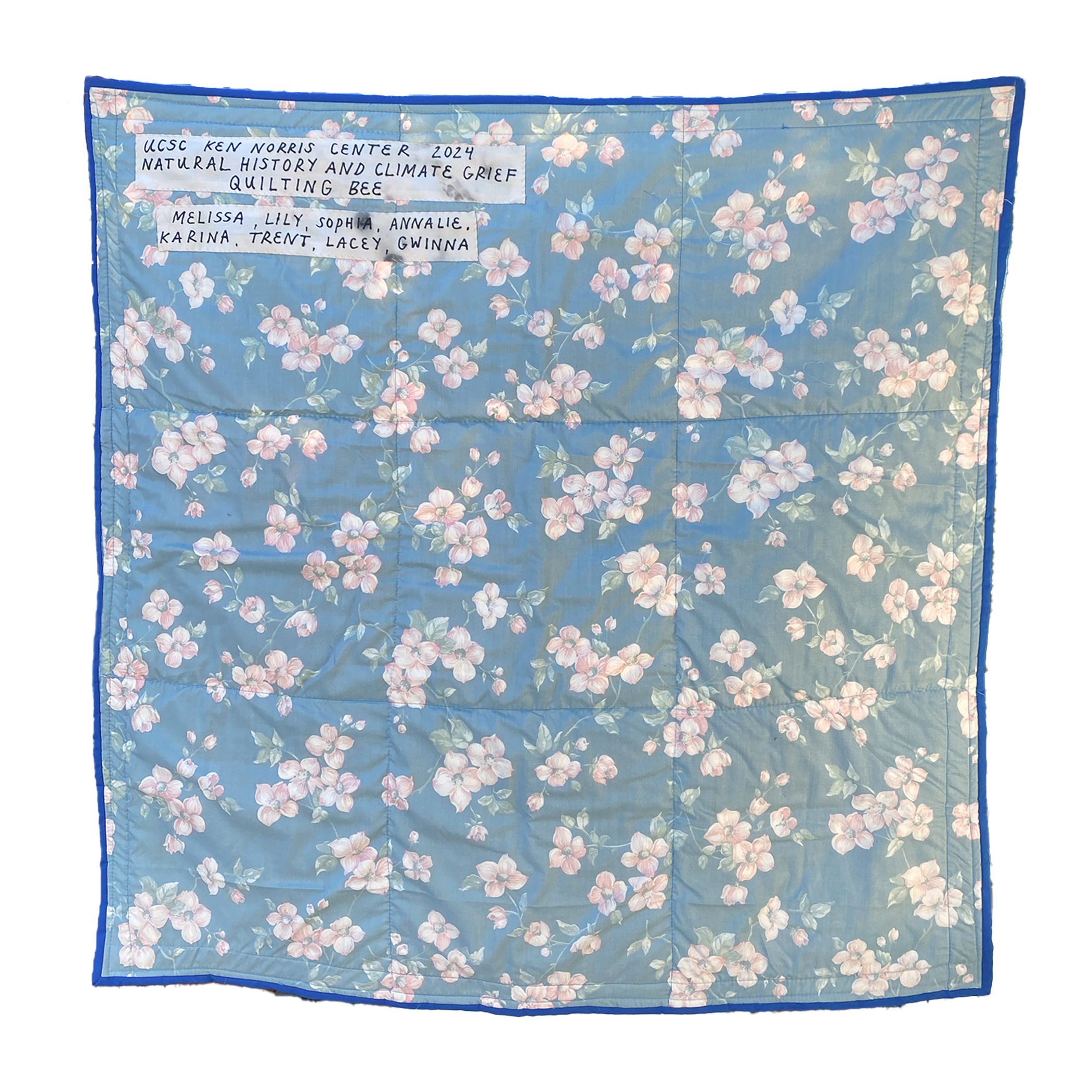
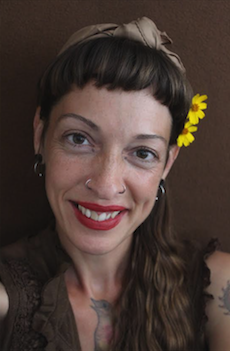 Maria Hele: Watercolors in Solidarity is a multi-layered project that combines archival research, embodied observation, and art to explore collaborations between humans, plants, and history that are solidaristic rather than extractive. With this project, I engage closely with a selection of native plants of the Santa Cruz area through a practice of being in-place with these plants. By “being in-place,” I am describing a methodology that disrupts a dominant/subordinate dichotomy of observer/subject that merely reproduces visual representations in order to open up space for a more complex relationship with the plants as co-artists. Over the course of this project, I intend to develop a set of 10 watercolor illustrations of select native plants, with the following goals: to reflect on decolonization by foregrounding the traditional names of the plants rather than the scientific or English common names; to uplift local plant restoration projects and contemporary stewardship efforts; and to provide an educational resource for K-12 classrooms to better understand plant connection and conservation in the incredible bioregion of the Santa Cruz area. This project as a whole thus works to enhance natural history in solidarity with the natural world.
Maria Hele: Watercolors in Solidarity is a multi-layered project that combines archival research, embodied observation, and art to explore collaborations between humans, plants, and history that are solidaristic rather than extractive. With this project, I engage closely with a selection of native plants of the Santa Cruz area through a practice of being in-place with these plants. By “being in-place,” I am describing a methodology that disrupts a dominant/subordinate dichotomy of observer/subject that merely reproduces visual representations in order to open up space for a more complex relationship with the plants as co-artists. Over the course of this project, I intend to develop a set of 10 watercolor illustrations of select native plants, with the following goals: to reflect on decolonization by foregrounding the traditional names of the plants rather than the scientific or English common names; to uplift local plant restoration projects and contemporary stewardship efforts; and to provide an educational resource for K-12 classrooms to better understand plant connection and conservation in the incredible bioregion of the Santa Cruz area. This project as a whole thus works to enhance natural history in solidarity with the natural world.
